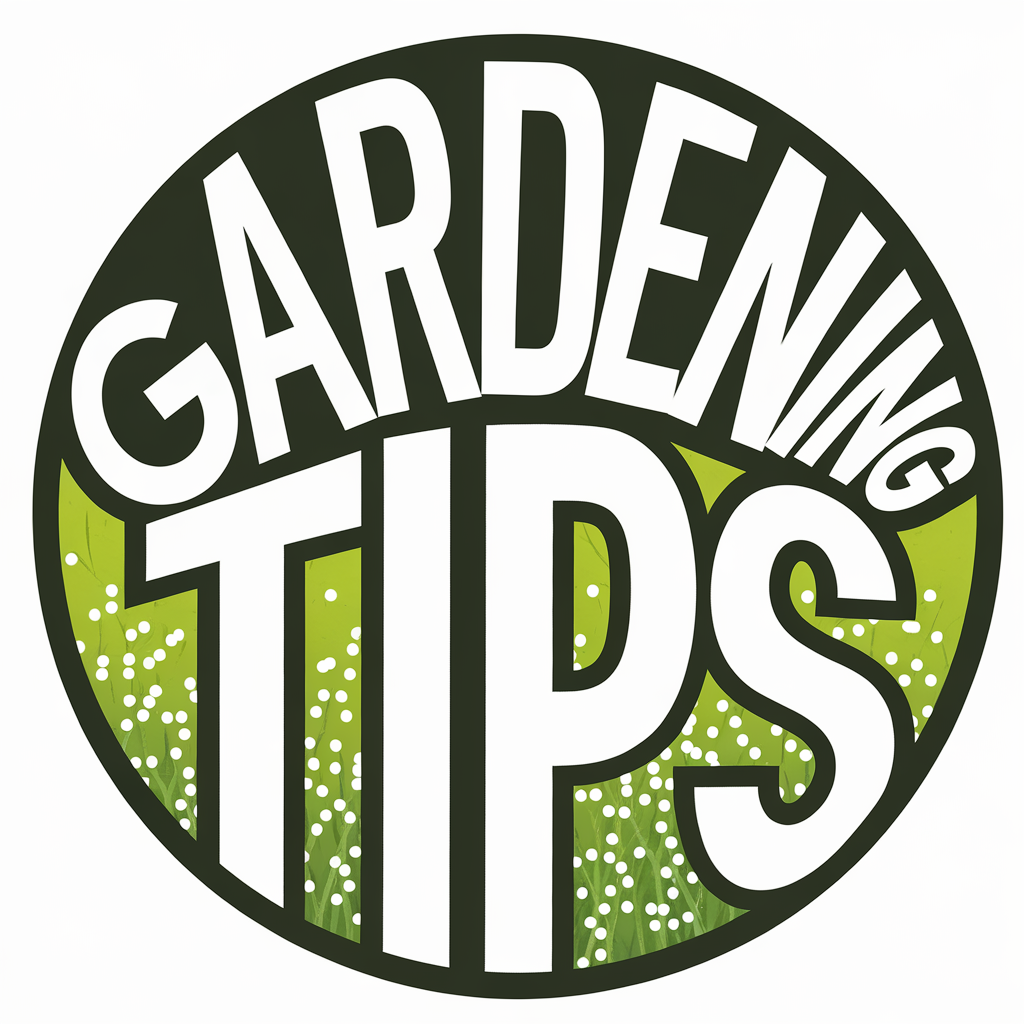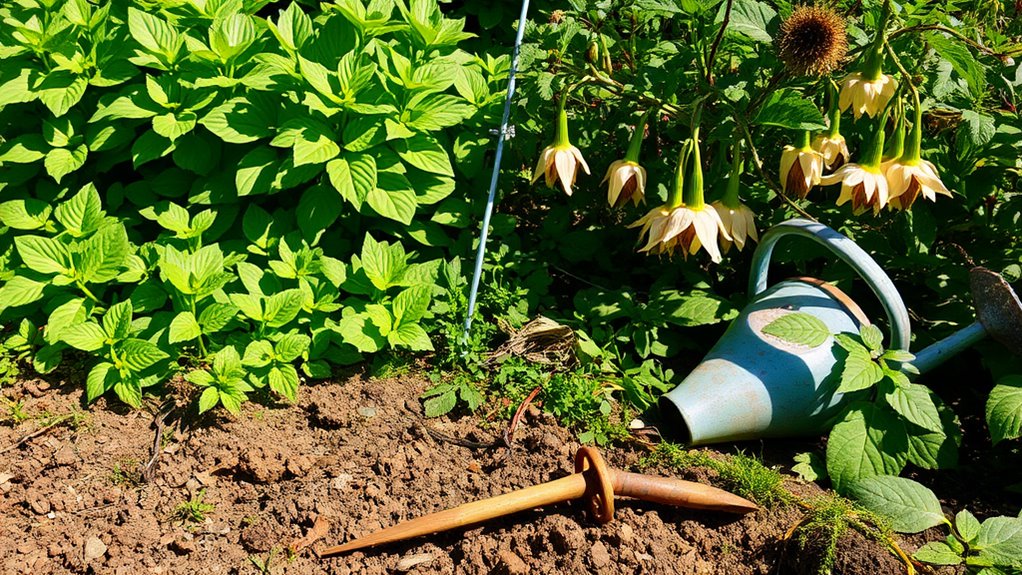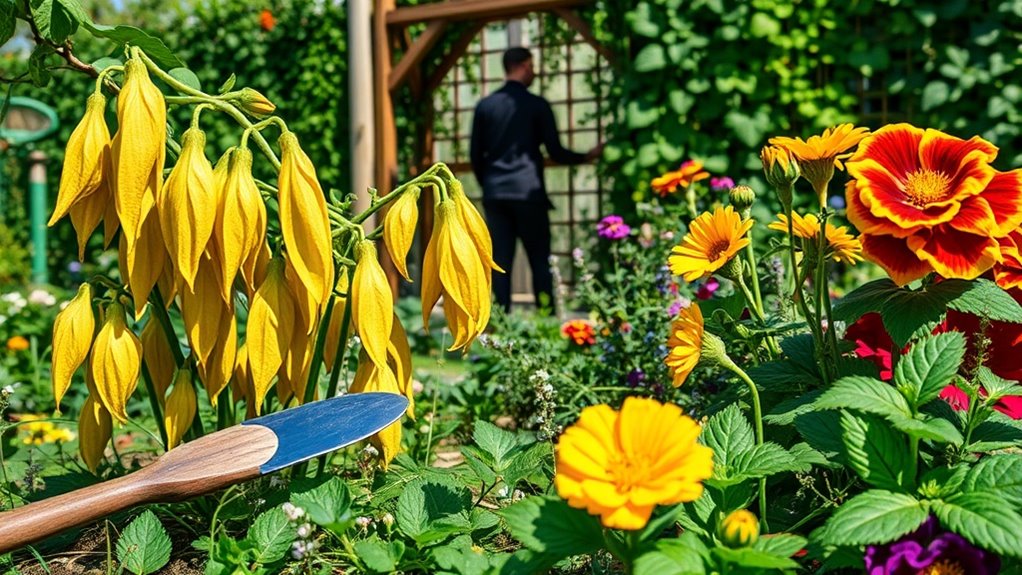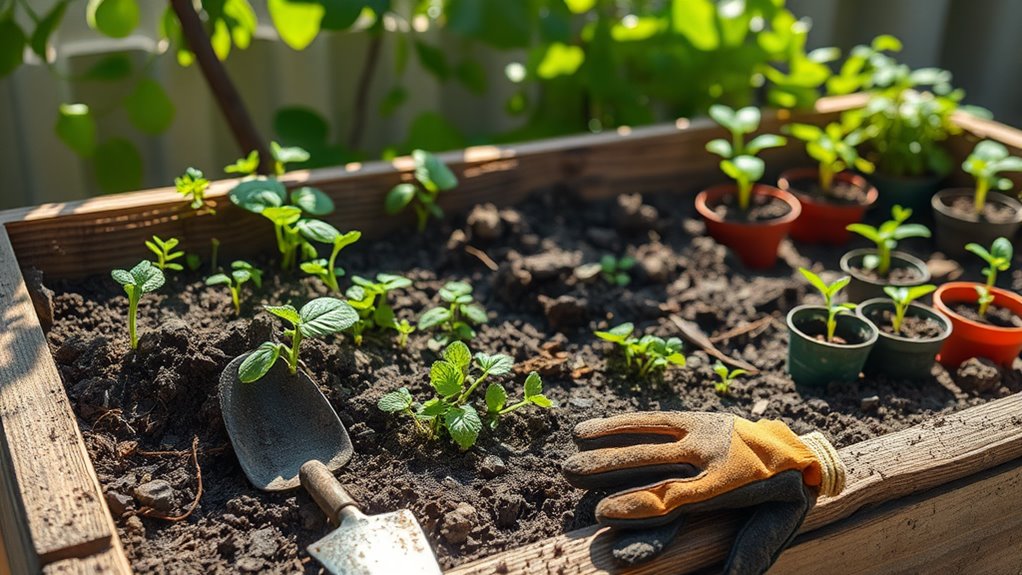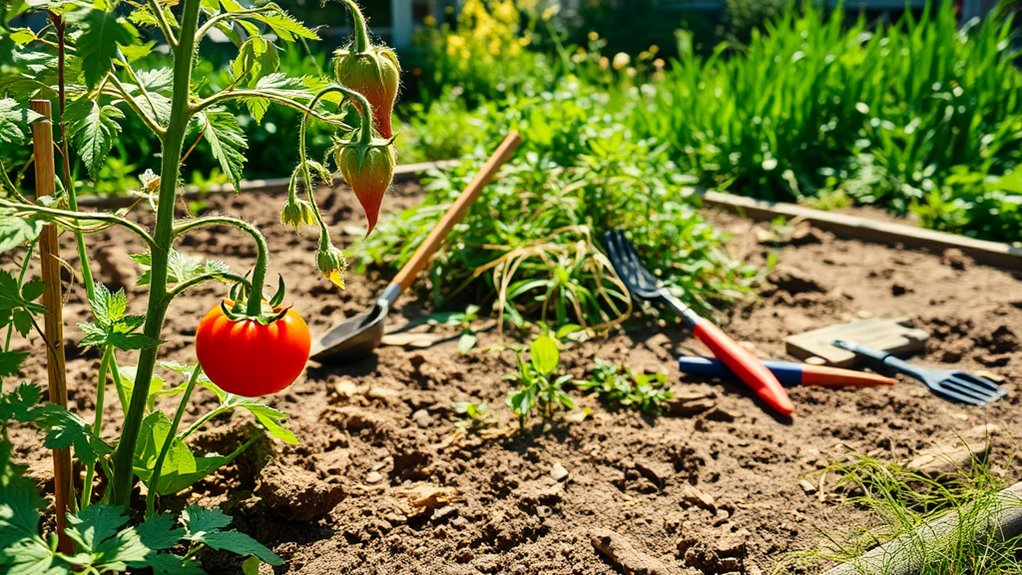I Skipped These Gardening Steps – Big Mistake!
Skipping essential gardening steps can lead to frustrating setbacks. You need to understand soil quality, from testing pH to enriching it with compost. Choosing the right plants, especially native species, guarantees they thrive in your climate. Implementing proper watering techniques and managing pests are vital. Don’t forget the timing for planting—monitor frost dates closely. By maintaining regular care and properly using mulch, you’ll see healthier plants. Discover more insightful tips to keep your garden flourishing.
Understanding Soil Quality
Soil is the foundation of your garden, and understanding its quality is essential for your plants’ success.
Start by testing your soil’s pH and nutrient levels; you can easily purchase a test kit.
Healthy soil should be rich in organic matter, well-draining, and teeming with beneficial microorganisms.
Incorporate compost to enhance structure and fertility.
Pay attention to soil texture—sandy, clay, or loamy—and adjust accordingly.
These gardening steps guarantee your plants receive adequate nutrients and moisture. Additionally, soil testing can reveal deficiencies that, when corrected, lead to increased crop yields and overall plant health.
Choosing the Right Plants
When choosing plants for your garden, consider selecting native species that thrive in your local climate and soil conditions. Understanding their sunlight and soil needs can make a big difference in your garden’s success. Additionally, incorporating soil preparation techniques can further enhance the growth and health of your chosen plants.
Native Plant Benefits
Have you ever wondered why native plants are often recommended for gardens?
These plants are perfectly adapted to your local climate, meaning they require less water and maintenance than non-natives.
By choosing natives, you support local wildlife, providing food and habitat for pollinators like bees and butterflies.
Their deep-root systems help prevent soil erosion and improve soil health.
Plus, native plants often resist pests and diseases, reducing the need for chemical treatments.
Embracing native plants not only enhances your garden’s beauty but also fosters a thriving ecosystem, making it a smart choice for both you and the environment.
Sunlight and Soil Needs
Choosing the right plants for your garden hinges on understanding their sunlight and soil needs.
Start by observing your garden’s light patterns—some plants thrive in full sun, while others prefer partial or full shade.
Next, assess your soil type: is it sandy, clay, or loamy? Each plant has specific soil preferences, so consider conducting a soil test to check pH and nutrient levels.
Once you’ve identified these factors, select plants that match your garden’s conditions.
This thoughtful approach will lead to healthier plants, vibrant blooms, and a thriving garden, ultimately saving you time and effort down the line.
Proper Watering Techniques
Mastering proper watering techniques is essential for nurturing a thriving garden.
First, assess your plants’ needs—some prefer moist soil while others thrive in drier conditions.
Water deeply but infrequently; this encourages roots to grow deeper.
Early morning is the best time to water, as it minimizes evaporation and fungal growth.
Use a soaker hose or drip irrigation to deliver water directly to the roots, avoiding wetting the foliage.
Always check the soil moisture level before watering; stick your finger into the soil about an inch deep.
Adjust your schedule based on weather conditions—don’t water if rain’s on the way! Additionally, implementing deep watering techniques can greatly enhance soil moisture levels, promoting healthier root development.
Implementing Pest Control Measures
While ensuring your plants receive the right amount of water sets a strong foundation for growth, protecting them from pests is equally important for a flourishing garden.
Start by regularly inspecting your plants for signs of trouble, like discolored leaves or holes.
Implementing natural pest control methods, such as introducing beneficial insects like ladybugs, can effectively reduce infestations. Additionally, using effective natural pest sprays can help deter unwanted insects without harming your plants.
You can also use barriers like row covers to shield young plants.
If needed, opt for organic pesticides, ensuring to follow label instructions carefully.
Timing for Planting
When’s the best time to plant your garden? Timing is vital!
Start by checking your local frost dates; planting too early can damage seedlings.
Generally, wait until after the last frost for tender plants like tomatoes and peppers.
If you’re planting cool-season crops like lettuce or peas, you can sow them a few weeks before the last frost.
Consider your climate zone, too—warm regions allow for earlier planting, while cooler areas need to wait.
Always monitor soil temperature; seeds germinate best in warm soil. Additionally, understanding optimal planting times can significantly enhance the flavor of your culinary herbs.
Proper timing guarantees a thriving garden, so don’t rush—patience pays off!
Regular Maintenance and Care
To keep your garden thriving, you need a consistent watering schedule that meets your plants’ needs. Additionally, implementing effective pest control strategies and maintaining soil health are essential for preventing issues before they arise. Furthermore, watering timing strategies can significantly enhance plant growth while minimizing water usage, ensuring your garden remains healthy and vibrant.
Consistent Watering Schedule
Consistently watering your garden is essential for healthy plant growth and vibrant blooms.
A well-planned watering schedule guarantees your plants get the moisture they need without drowning them.
Here are three key tips to maintain that consistency:
-
Water Early or Late: Aim to water in the early morning or late afternoon to minimize evaporation and maximize absorption.
-
Check Soil Moisture: Stick your finger into the soil; if it’s dry an inch down, it’s time to water.
-
Adjust for Weather: Be mindful of rain and adjust your watering accordingly to prevent overwatering.
Stick to these tips, and you’ll see your garden thrive!
Pest Control Strategies
How can you keep pests at bay while ensuring your garden flourishes? Regular maintenance is key. Start by inspecting your plants frequently for signs of pests. Use natural repellents like neem oil and introduce beneficial insects, such as ladybugs. Rotate your crops annually to disrupt pest cycles and maintain diversity.
Here’s a quick reference table for effective pest control strategies:
| Strategy | Description | Frequency |
|---|---|---|
| Plant Inspection | Check for pests weekly | Weekly |
| Natural Repellents | Apply neem oil or soap solution | Bi-weekly |
| Beneficial Insects | Introduce ladybugs or lacewings | As needed |
| Crop Rotation | Change plant locations annually | Yearly |
| Cleanliness | Remove debris and dead plants | Regularly |
Soil Health Maintenance
Maintaining a thriving garden goes beyond effective pest control; it starts with healthy soil.
Regular maintenance guarantees your plants have the nutrients they need to flourish.
Here are three essential steps to keep your soil in top shape:
- Test Your Soil: Regularly check pH and nutrient levels to understand what your soil needs.
- Add Organic Matter: Incorporate compost or well-rotted manure to enhance fertility and structure.
- Mulch: Apply a layer of mulch to retain moisture, suppress weeds, and gradually improve soil health.
